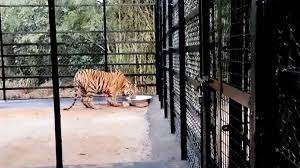Today’s Current Affairs: 8th Feb 2024 for UPSC IAS exams, State PSC exams, SSC CGL, State SSC, RRB, Railways, Banking Exam & IBPS, etc
Table of Contents
Vidyanjali Scholarship Programme:

The Union Minister of Education and Skill Development & Entrepreneurship recently launched the EdCIL Vidyanjali Scholarship Programme.
- This initiative guarantees access to high-quality learning systems by facilitating a seamless transition from secondary to higher education and extending financial support for the meritorious Navodaya Vidyalaya students who lack means.
- It symbolises a whole-of-society approach to empowerment through access to and opportunities for education, particularly for students belonging to economically disadvantaged sections.
- The Vidyanjali programme intends to garner assistance and funding from non-government partners and private sources such as CSR grants, national and international donors, and impact investors.
- The beneficiaries of the Vidyanjali programme in its initial phase will be students of grades XI and XII studying in Navodaya Vidyalayas across the country.
- A fintech platform has been specifically curated under Vidyanjali, and the sponsorship will be disbursed to students through this platform as Direct Benefit Transfer (DBT).
- This platform will be instrumental in capturing data, receiving, hosting, and viewing student applications, tracking student progress, tracking grant disbursement, monitoring fund utilisation, generating impact reports towards SDG realisation, individual mentions of notable student achievement, and publicly acknowledging the support of the funders, among other platform utilities.
Sepahijala Wildlife Sanctuary : Welcomed a New Batch Of Animals

The Sepahijala Wildlife Sanctuary of Tripura recently welcomed a new batch of animals, which include two Royal Bengal tigers, two leopards, four golden pigeons, a silver pigeon, two peafowls, and four hill mynas.
- Sepahijala Wildlife Sanctuary (SWL) is located around 25 km from Agartala, Tripura.
- To conserve and propagate the biodiversity of the area, the Sepahijala bio-complex came into existence in 1972.
- With the addition of a botanical garden, a deer park, and a zoo, the bio-complex was subsequently attributed to the status of Sepahijala Wildlife Sanctuary in early 1987.
- It is spread over 18.5 sq. km and is home to migratory birds and animals.
- The wildlife sanctuary is divided into five sections, basically to segregate the different types of animals living here.
- They are the carnivore section, primate section, ungulate section, reptile section, and aviary section.
- It also has two natural lakes, namely Abasarika and Amrit Sagar.
- Clouded Leopard National Park, established in 2007, is a part of SWL.
- The sanctuary has no less than 456 plant species; many kinds of bamboo and a variety of grasses and medicinal plants also grow in the sanctuary.
India’s First Hypervelocity Expansion Tunnel Test Facility:

The Indian Institute of Technology Kanpur (IIT-K) has successfully established and tested India’s first Hypervelocity Expansion Tunnel Test Facility recently.
- The S2, nicknamed ‘Jigarthanda’, is a 24-metre-long facility located at IIT Kanpur’s Hypersonic Experimental Aerodynamics Laboratory (HEAL) within the Department of Aerospace Engineering.
- It is India’s first Hypervelocity Expansion Tunnel Test Facility.
- It was indigenously designed and developed over three years with funding and support from the Aeronautical Research and Development Board (ARDB), the Department of Science and Technology (DST), and IIT Kanpur.
- It is capable of generating flight speeds between 3-10 km/s, simulating the hypersonic conditions encountered during the atmospheric entry of vehicles, asteroid entry, scramjet flights, and ballistic missiles.
- It will be a critical asset for the Indian Space Research Organisation (ISRO) and the Defence Research and Development Organisation (DRDO).
- It will serve as a testing ground for ongoing missions of ISRO and DRDO like Gaganyaan, Reusable Launch Vehicles (RLV), and hypersonic cruise missiles, enabling the development of more advanced and reliable aerospace technologies.
Lupus : Study

Australian researchers recently worked out how to fix a defect that causes lupus
- Lupus is an autoimmune disease that causes your immune system to damage organs and tissue throughout your body.
- It causes inflammation that can affect your skin, joints, blood, and organs like your kidneys, lungs, and heart.
- The cause of lupus is unknown.
- It’s thought to be the result of a mix of genetic, hormonal, and environmental factors.
- Lupus is much more common among women than men.
- Lupus can have many symptoms, and they differ from person to person. Some of the more common ones are:
- Pain or swelling in joints
- Muscle pain
- Fever with no known cause
- Red rashes, most often on the face (also called the “butterfly rash”)
- Chest pain when taking a deep breath
- Hair loss
- Pale or purple fingers or toes
- Sensitivity to the sun
- There is no cure for lupus, but medicines and lifestyle changes can help control it.
Pradhan Mantri Bhartiya Jan Aushadhi Kendras:

Primary Agricultural Credit Societies (PACS) have been allowed by the Government to operate Pradhan Mantri Bhartiya Jan Aushadhi Kendras (PMBJK) under the Pradhan Mantri Bhartiya Jan Aushadhi Pariyojana.
- Pradhan Mantri Bhartiya Jan Aushadhi Kendras are set up under Pradhan Mantri Bhartiya Janaushadhi Pariyojana, which was launched by the Department of Pharmaceuticals, Ministry of Chemicals and Fertilisersin November 2008.
- Objective is to provide quality medicines at affordable prices for all, particularly the poor, so as to reduce out-of-pocket expenses in healthcare.
- These Kendra’s provide generic drugs, which are available at lesser prices but are equivalent in quality and efficacy to expensive branded drugs.
- All therapeutic medicines are made available from Jan Aushadhi Stores.
- Jan Aushadhi stores also sell allied medical products commonly sold in chemist shops so as to improve the viability of running the Jan Aushadhi store.
- Pharmaceutical & Medical Devices Bureau of India (PMBI) has been established under the Department of Pharmaceuticals, Govt. of India, with the support of all the CPSUs for coordinating procurement, supply, and marketing of generic drugs through the PMBKs.
Vaccine Safety Net:

The Healthy Indian Project (THIP), a health information platform in India, is included as a member of the World Health Organization’s Vaccine Safety Net (VSN).
- Vaccine Safety Net is a global network of websites, established by the World Health Organization that provides reliable information on vaccine safety.
- It is a network of a diverse group of digital information resources (websites and social media), VSN members, located in countries around the world and providing scientifically based information on vaccine safety in various languages.
- A key player in the Project is the Global Advisory Committee on Vaccine Safety (GACVS), established by WHO in 1999, to respond promptly, efficiently, and with scientific rigour to vaccine safety issues of potential global importance.
- At the outset of the Project, GACVS developed three categories of criteria for good information practices – regarding credibility, content, accessibility and design to which digital resources providing information on vaccine safety should adhere.
- WHO evaluates those electronic resources for their adherence to these criteria.
- It is continuously expanding and to date, 110 websites from 45 countries provide vaccine safety information in 43 languages.
SAMARTH Centres:

The Minister of State for Heavy Industries informed the Lok Sabha about SAMARTH Centres
- The Smart Advanced Manufacturing and Rapid Transformation Hub (SAMARTH) centres are set up under the Scheme for “Enhancement of Competitiveness in the Indian Capital Goods Sector.
- These centres have been providing assistance to the MSMEs to train the workforce and make them aware of Industry 4.0 technologies in the following ways:
- Organizing Seminars/ Workshops and knowledge-sharing events on Industry 4.0;
- Training industries to create awareness about Industry 4.0;
- Providing consultancy (in areas such as IOT Hardware, Software development, and data analytics) and incubation support to start-ups including MSMEs.
- It has been launched by the Ministry of Heavy Industries to address technological obsolescence and limited access to quality industrial infrastructure and common facilities.
- In order to address the skill gaps and infrastructure development and technology needs for the Capital Goods Sector, Phase I of the Capital Goods scheme was rolled out in November 2014.
- Phase I of the scheme fostered partnerships between Academia and Industry for engendering technology development with Government support.
- The objective of Phase II is to expand and enlarge the impact created by the Phase I pilot scheme, thereby providing greater impetus through the creation of a strong and globally competitive capital goods sector that contributes at least 25% to the manufacturing sector.
World’s First Melanistic Tiger Safari : Odisha

Odisha is set to unveil the world’s first melanistic tiger safari near the Similipal Tiger Reserve (STR).
Melanism and Melanistic Tiger:
- Melanism is a genetic condition, that results in increased melanin production, leading to black or nearly black skin, feathers, or hair in animals.
- The Royal Bengal Tigers of Similipal boast a distinctive lineage with elevated melanin levels, giving rise to black and yellow interspersed stripes, making them pseudo-melanistic.
- According to the All India Tiger Estimation, 2022, Similipal Tiger Reserve houses 16 tigers, with 10 of them displaying melanistic traits.
- Spanning approximately 200 hectares near Dhanbad-Balasore National Highway-18, the safari site lies in close proximity to STR, providing a landscape akin to Simlipal.
- In the beginning, three melanistic tigers from Nandankanan Zoo, along with rescued or orphaned tigers, will occupy the open enclosures of the safari.
- It aims to raise awareness about the conservation needs of melanistic tigers, providing a platform for researchers and enthusiasts to engage with these rare big cats.
- The project necessitates approvals from the Central Zoo Authority and other regulatory bodies overseeing wildlife initiatives in the country.
- A National Tiger Conservation Authority committee will also conduct a feasibility study of the proposed site before granting final clearance.
Black-necked Crane : Assesment

The Wildlife Institute of India and the Zoological Survey of India have been conducting assessments of the black-necked crane population.
- The black-necked crane (Grus nigricollis) is a medium-sized crane that is native to Asia.
- It is the only alpine crane species in the world and lives at high altitudes in the Himalayas and on the Tibetan Plateau.
- The black-necked crane is listed in Schedule I of the Wild Life (Protection) Act, 1972, receiving the highest degree of protection.
- It is also listed in Appendix I of the Convention on International Trade in Endangered Species of Wild Fauna and Flora and the Convention on Conservation of Migratory Species.




